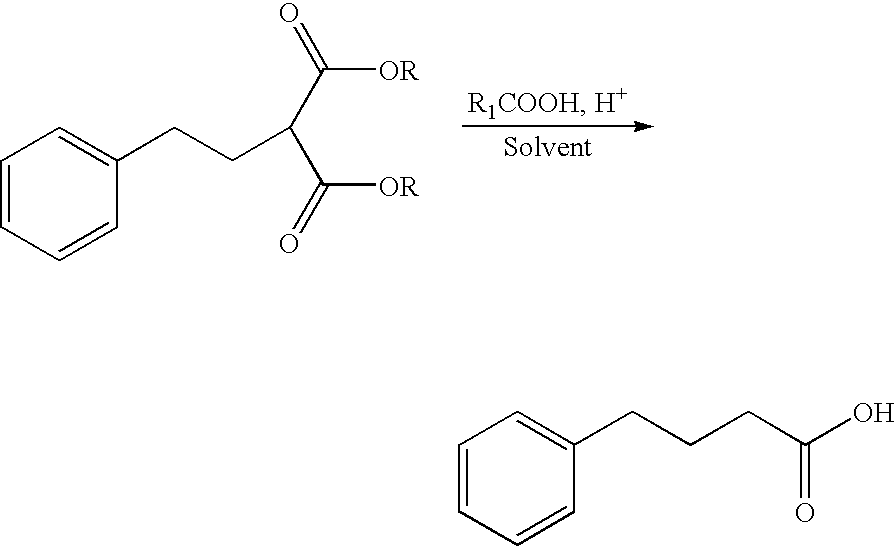Use of highly concentrated formulations of 4-phenylbutyrate for treatment of certain disorders
- Summary
- Abstract
- Description
- Claims
- Application Information
AI Technical Summary
Benefits of technology
Problems solved by technology
Method used
Image
Examples
example 1
Preparation of a Liquid Oral Pharmaceutical Composition of Sodium 4 Phenylbutyrate with a Strength of 500 mg / mL
[0071]About 12.5 g of sodium 4-phenylbutyrate was transferred to a 25 mL volumetric flask to which was added about 10 mL of water, and the mixture was agitated to dissolve the butyrate and form a solution. To the solution was added about 0.05 g of sodium saccharin, 0.05 g of sodium benzoate, and the solution was mixed well. This solution was compounded with water to yield 25 mL of a liquid oral dosage form.
example 2
[0072]About 12.5 g of sodium 4-phenylbutyrate was transferred to a 25 mL volumetric flask. About 10 mL of water was added to the flask and the mixture was agitated to dissolve the butyrate. To the solution was added about 0.05 g of raspberry flavor (e.g., raspberry XBF-700194, available from IFF International Flavors & Fragrances, New York, N.Y.), 0.05 g of sodium benzoate, and then mixed well. This mixture was compounded to 25 mL with water. Any flavoring that is dispersible in water is generally suitable for this invention.
example 3
[0073]About 12.5 g of sodium 4-phenylbutyrate was transferred to a 25 mL volumetric flask to which was added about 10 mL of water and agitated to dissolve. To the mixture was added about 0.05 g of sodium benzoate and mixed well. This mixture was compounded to 25 mL with water.
PUM
| Property | Measurement | Unit |
|---|---|---|
| Concentration | aaaaa | aaaaa |
| Concentration | aaaaa | aaaaa |
| Concentration | aaaaa | aaaaa |
Abstract
Description
Claims
Application Information
 Login to View More
Login to View More - R&D
- Intellectual Property
- Life Sciences
- Materials
- Tech Scout
- Unparalleled Data Quality
- Higher Quality Content
- 60% Fewer Hallucinations
Browse by: Latest US Patents, China's latest patents, Technical Efficacy Thesaurus, Application Domain, Technology Topic, Popular Technical Reports.
© 2025 PatSnap. All rights reserved.Legal|Privacy policy|Modern Slavery Act Transparency Statement|Sitemap|About US| Contact US: help@patsnap.com

